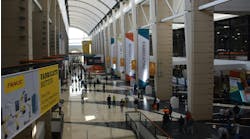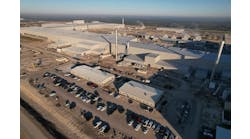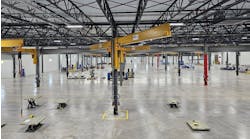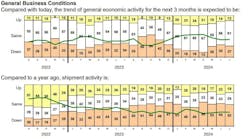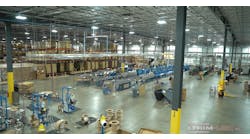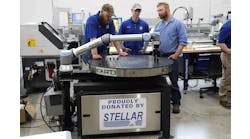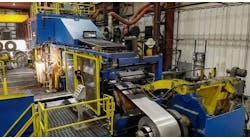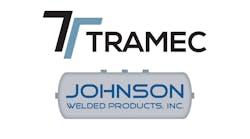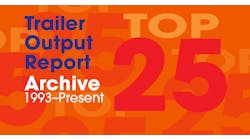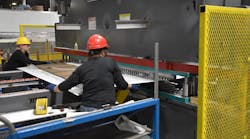Economic activity in the manufacturing sector grew in August, with the overall economy notching a 15th consecutive month of growth, say the nation's supply executives in the latest Manufacturing ISM Report On Business by the Institute for Supply Management.
The August Manufacturing PMI registered 59.9 percent, an increase of 0.4 percentage point from the July reading of 59.5 percent. A reading above 50 percent indicates that the manufacturing economy is generally expanding; below 50 percent indicates that it is generally contracting. A Manufacturing PMI above 43.1 percent, over a period of time, generally indicates an expansion of the overall economy.
"Business Survey Committee panelists reported that their companies and suppliers continue to struggle at unprecedented levels to meet increasing demand. All segments of the manufacturing economy are impacted by record-long raw-materials lead times, continued shortages of critical basic materials, rising commodities prices and difficulties in transporting products,” Timothy R. Fiore, chair of the ISM manufacturing business survey committee, said. “The new surges of COVID-19 are adding to pandemic-related issues—worker absenteeism, short-term shutdowns due to parts shortages, difficulties in filling open positions and overseas supply chain problems—that continue to limit manufacturing-growth potential.”
However, optimistic panel sentiment remained strong, with eight positive comments for every cautious comment.
What respondents are saying
"Strong sales continue, but production is limited due to supply issues with chips." [Transportation Equipment]
"Continue to be unable to hire hourly personnel or machine operators due to few applicants. Steel and aluminum remain in short supply. New business continues to grow and come in. Unable to handle influx of orders without staff, both hourly and salaried." [Fabricated Metal Products]
"Customer order backlog continues to climb because we are unable to raise production rates due to supplier parts and manpower challenges. Continue to see price increases with key commodities, and logistics is an ongoing challenge that has no end in sight." [Machinery]
Broadly, demand expanded, with the New Orders Index growing, supported by continued expansion of the New Export Orders Index; Customers' Inventories Index remaining at very low levels; and Backlog of Orders Index staying at a very high level.
Consumption (measured by the Production and Employment indexes) declined in the period, with a combined 2.3-percentage point decrease to the Manufacturing PMI calculation. The Employment Index returned to contraction after one month of expansion; hiring difficulties at panelists' companies were the most significant hurdle to further output in August, as validated by the growth in inventory accounts.
Inputs—expressed as supplier deliveries, inventories, and imports—continued to support input-driven constraints to production expansion, at slower rates compared to July. The Supplier Deliveries Index softened while the Inventories Index made a strong move into expansion territory due to improvements in raw material deliveries as well as work in progress inventory being held longer due to key part shortages.
